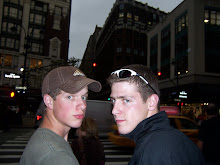Soldiers, Sailors and Airmen of the Allied Expeditionary Force!
You are about to embark upon the Great Crusade, toward which we have
striven these many months. The eyes of the world are upon you. The
hopes and prayers of liberty-loving people everywhere march with you.
In company with our brave Allies and brothers-in-arms on
other Fronts, you will bring about the destruction of the German war
machine, the elimination of Nazi tyranny over the oppressed peoples of
Europe, and security for ourselves in a free world.
Your task will not be an easy one. Your enemy is well trained, well
equipped and battle hardened. He will fight savagely.
But this is the year 1944! Much has happened since the Nazi triumphs of
1940-41. The United Nations have inflicted upon the Germans great defeats,
in open battle, man-to-man. Our air offensive has seriously reduced their
strength in the air and their capacity to wage war on the ground. Our Home
Fronts have given us an overwhelming superiority in weapons and munitions
of war, and placed at our disposal great reserves of trained fighting men.
The tide has turned! The free men of the world are marching together to
Victory!
I have full confidence in your courage and devotion to duty and skill in
battle. We will accept nothing less than full Victory!
Good luck! And let us beseech the blessing of Almighty God upon this great
and noble undertaking.
SIGNED: Dwight D. Eisenhower
The selection of a site for the largest amphibious landing in history was one of the biggest decisions of World War II. Allied planners needed a sheltered location with flat, firm beaches and within range of friendly fighter planes based in England. Most important was a reasonable expectation of achieving the element of surprise. Five beaches, code-named Utah, Omaha, Gold, Juno, and Sword, on the northern coast of Normandy, France, met all the criteria and were chosen as invasion sites.
On the evening of June 5, 1944, more than 150,000 men, a fleet of 5,000 ships and landing craft, 50,000 vehicles, and 11,000 planes sat in southern England, poised to attack secretly across the English Channel along the Normandy coast of France. This force was the largest armada in history and represented years of training, planning, and supplying. Because of the highly intricate Allied deception plans, Hitler and his staff believed that the Allies would be attacking at the Pas-de-Calais.
In the early morning of June 6, thousands of Allied paratroopers landed behind enemy lines, securing key roads and bridges on the flanks of the invasion area. As the sun rose on the Normandy coastline, the Allies began their amphibious landings, traveling to the beaches in small landing craft lowered from the decks of larger ships anchored in the Channel. The attack on four of the beaches went according to plan. But at Omaha Beach (see large map), between Utah and Gold, the bravery and determination of the U.S. 1st Infantry Division was tested in one of the fiercest battles of the war.
Surrounded at both ends by cliffs that rose wall-like from the sea, Omaha was only four miles long. To repel the Allies at the water’s edge, the Germans built a fortress atop the cliffs at Pointe du Hoc overlooking Omaha from the west. They dug trenches and guns into the 150-foot bluffs lining the beach and along five ravines leading off it. As Allied troops waded into the surf, many were cut down as the doors of their landing craft opened. The survivors had to cross more than 300 yards across a tidal flat strewn with man-made obstacles. Winds and currents pushed landing craft into clumps as the men moved ashore. As a result, soldiers ran onto the beach in groups and became easy targets. Of the more than 9,000 Allied casualties on D-Day, Omaha accounted for about one-third. Allied planners had hoped that the forces at Omaha would advance 5 to 10 miles after 24 hours of fighting. Stiff German resistance, however, stopped the invaders cold on the beach. Progress inland was excruciatingly slow and painful. The Allied forces reached their first day goal (dotted blue line on the large map) only after more than two days of bloody fighting. Although many died, the Allies eventually took control of the beach and fought their way inland.
Friday, June 5, 2009
June 6 D-Day
Posted by Cpt.Winters at 11:58 PM
Subscribe to:
Post Comments (Atom)


0 comments:
Post a Comment